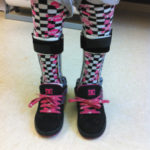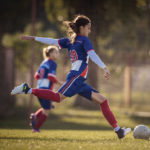Data support case-by-case approach
By Larry Hand
Gait patterns can vary significantly among young patients with Charcot-Marie-Tooth disease (CMT), and pathomechanics can vary even between limbs in one child, according to a recent study published in Gait & Posture.
This underscores the need for lower extremity practitioners to evaluate each child’s gait individually rather than rely on a textbook definition of CMT, according to study author Sylvia Õunpuu, MSc, director of research at the Center for Motion Analysis at Connecticut Children’s Medical Center in Farmington.
Õunpuu and colleagues retrospectively analyzed 33 children and adolescents (aged 12 ± 4 years) with CMT who underwent motion analysis and clinical examination while being evaluated for orthopedic surgery between 1990 and 2011. They compared data on patients with CMT with data on an age-matched control group of typically developing children.
Delayed peak dorsiflexion in terminal stance was seen in 59 of 66 limbs, and in some cases was the only gait abnormality found. This suggests delayed peak dorsiflexion may be the first gait-related sign of CMT, representing a major finding, according to Õunpuu.
Although the authors considered patient data initially as a single group, the evidence led them to subsequently divide patients into three subgroups based on peak ankle dorsiflexion in terminal stance, which is affected by plantar flexor length, plantar flexor strength, and cavus foot posture. Nineteen patients (30 limbs) had typical peak ankle dorsiflexion, eight patients (13 limbs) had less than typical dorsiflexion, and 14 patients (23 limbs) had excessive dorsiflexion. The findings were published in the September 2013 issue of Gait & Posture.
“One of the primary messages from this paper is that the orthopedic textbooks generally describe CMT as a certain set of conditions and, therefore, a certain set of treatments,” Õunpuu said. “CMT presents in many different ways and the degree of severity differs from patient to patient; therefore, treatment differs from patient to patient.”
In addition, gait pathomechanics may be asymmetrical in patients with CMT, she added, with some patients having one limb in the typical peak ankle dorsiflexion subgroup and the other limb in a different subgroup.
“Understanding that, and understanding maximum ankle dorsiflexion during gait and the extent of cavus deformity and plantar flexor strength and how these findings interact in each patient is really important for making an appropriate decision around treatment,” she said.
Ankle foot orthoses (AFOs) and other interventions can be used to address cavus foot presentation, excessive ankle dorsiflexion due to plantar flexor weakness, and plantar flexion contracture that results in limited dorsiflexion. However, clinicians need to be aware that overcorrection can create a new set of gait-related issues, the authors noted, and specified that surgical lengthening of the plantar flexors is not recommended.
“Two important goals an AFO should achieve are, first, to limit excessive dorsiflexion and allow weight bearing on the distal portion of the foot to provide more stability, and, second, to control cavovarus foot presentation to prevent plantar flexion contraction,” said Sean McKale, CO, LO, practice manager of Midwest Orthotic and Technology Center in Chicago, and a member of the Charcot-Marie-Tooth Association (CMTA) advisory board.
“This may be why we generally have had more success with ground reaction style and carbon fiber AFOs, and working with manufacturers to customize a stiffness profile for a particular individual. Additionally, using casting techniques and extrinsic lateral forefoot posting to maintain neutral coronal foot position has always been important to improve balance and distribute weight more evenly across the forefoot,” he said.
Practitioners are often better able to address gait-related CMT issues when treating patients as children than as adults, said David Misener, CPO, of Clinical Prosthetics and Orthotics in Albany, NY, who is also on the CMTA advisory board.
“Typically you’re able to push children a little bit harder,” Misener said. “Their bodies are little bit more elastic than adults’ and you can be a little bit more aggressive. Typically there are fewer psychosocial issues for children, and they are more willing to wear a device.”
Larry Hand is a writer in Massachusetts.
Source:
Õunpuu S, Garibay E, Solomito M, et al. A comprehensive evaluation of the variation in ankle function during gait in children and youth with Charcot-Marie-Tooth disease. Gait Posture 2013;38(4):900-906.






